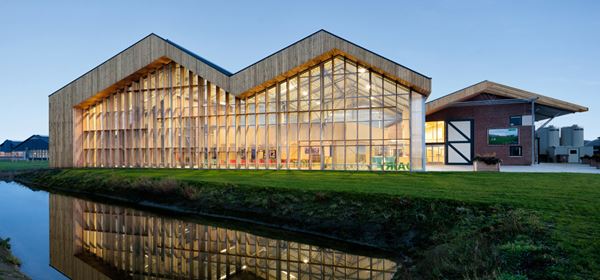As educational institutions intensify their commitments to expand diversity, inclusion and belonging through admission policies, community representation and engagement, see how we as designers are responding to the need for physical spaces to reflect and support increasingly diverse campus communities.
Over the past decade, there has been a growing conversation about promoting diversity and inclusion at higher education campuses across North America. The root motivation stems from recognizing that changing student demographics – and increasing diversity – have not been well-reflected in institutional programs and structures. Amid the social reckoning of the past two years, institutions have redoubled their commitments to anti-racism with new strategies for expanding diversity through admission policies, curriculum and course development, representation at faculty and leadership levels and community engagement. And what of their campuses? Can physical spaces be responsive to increasing campus diversity to support inclusion? And further, can the spatial experience – through its configuration, articulation, relationships and materiality – champion a sense of belonging?
It is critical to realize the term “diversity” encompasses a vast array of dimensions, including diversity of gender, ability, cultural background, sexual orientation and age. We must also consider diversity of enrollment: first-generation, part-time, lifelong and commuter. Over the past decade, changes in student demographics have seen the emergence of specific design interventions to address the needs of specific groups. This includes quiet spaces for prayer and wellness, private spaces for mothers and babies, all-gender washrooms, food pantries, updated universal design standards, special learning and testing spaces for neurodiverse learners, community-engaged art installations and multicultural spaces for student groups. Often driven by student advocacy, these are all positive steps, and university campuses have often been at the forefront of these thoughtful inclusions, which then inform design beyond campus boundaries.
Promoting Inclusion
Building upon this, if we broaden the design investigation to promote inclusion by responding to the wide range of requirements of an increasingly diverse campus body, these recommendations from our recent projects emerge:




At George Brown College’s Waterfront Campus, corridors are not for circulation alone but become the school’s connective tissue inviting informal collaboration and socializing. A variety of spaces of multiple scales and arrangement permit students to select spaces based their activities and preferences.
Towards Reconciliation
Specifically in Canada, the 94 calls to action by the Truth and Reconciliation Commission (2015) have spurred an ever-deeper conversation within design practices to meaningfully integrate Indigenous voices and ways of knowing into projects. As institutions expand program access for Indigenous students, hire more Indigenous faculty and create Elders-in-Residence programs, design projects are exploring ways to imbue indigenous approaches in collaboration with Indigenous design partners. At IBI Group’s Learning+ practice in Ontario, two recent examples emerge as precedents for future projects:



At Algoma University, we collaborated with local Elders and Indigenous partners to explore conceptual ideas underpinning a new building for engaged learning and socio-cultural gathering. This is one of three spatial design concepts interpreting how Water, Sky and Earth could shape the project
The Way Forward
We know that these are early steps. Pandemic life and the expansion of hybrid education have only underscored the immense value of social engagement and shared spirit in bolstering effective learning and the overall student experience. As we return to campus with a greater mindfulness of the nuances of diversity and the imperative for inclusion, we have a deeper appreciation of individual preferences, driven by circumstance and personal experience, which influence each student’s sense of belonging. As designers, with each campus project we continue to explore and define the collective foundations that underpin the project, while supporting a plurality of design strategies that come together to develop the rich tapestry of spatial experiences that foster inclusion in today’s campus communities.





